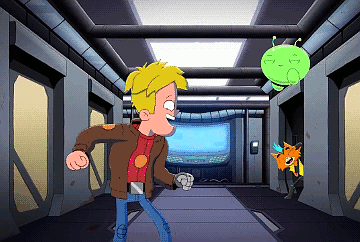


Design-wise, it’s much more a product of 50s movies than the distinctive Japanese robot aesthetic which would snowball later.Īlas, beyond that short summary, I have not on a brief look been able to find any scans of the manga, so I can’t tell you how it ends, or what thematic resolution they find. The idea of sitting inside a humanoid robot had not yet become established, and Shotaro controlled it remotely. Gif source: like Frankenstein’s monster, the robot in Tetsujin is not intrinsically good or evil the manga’s protagonist, Shotaro Kaneda, manages to get to it before a group of gangsters and becomes a kind of boy detective figure insistent on using the robot for peace. But it also drew on his experiences living through the levelling of Kobe by American B-29 bombers, the 1931 film adaptation of Mary Shelly’s novel Frankenstein, and the rumours of secret Nazi weapons projects. Yokoyama drew on a number of his sources: primarily the manga of Osamu Tezuka ( Animation Night 80), particularly Metropolis (whose adaptation by Rintaro we watched on Animation Night 53). Humanoid robots in manga originate in Tetsujin 28-gō (1956) by Mitsuteru Yokoyama, which you may recall cited by Otomo as a major influence on Akira it featured a military robot built in the last days of the Japanese Empire repurposed by the son of its creator. So let’s begin our history of Gundam a little earlier, with a history of robot anime in general. Here, the robots were essentially a kind of scifi spin on a superhero: a one of a kind machine with wondrous abilities. Gif source: the time Gundam arrived on the scene, mecha anime (anime about machines, primarily humanoid robots) was already well established as one of the major subgenres, closely linked to tokusatsu in terms of target demographics and sensibility.īack then, mecha shows typically fell into a genre known as ‘super robot’. That’s the one that began in 1979 with Mobile Suit Gundam ( 機動戦士ガンダム Kidō Senshi Gandamu). However, most of the material falls into one primary series, known as the Universal Century timeline. So some Gundam stories, such as Iron Blooded Orphans, are separate stories linked to the brand only by some similarities of design and shared staff. Where do you begin? You will fairly soon discover that the Gundam title comprises several different, separate multipart stories, known as ‘timelines’. If, like me, you’re curious to know what the fuss is about, you kind of hit a wall in that there is just so much Gundam, and it’s arranged so haphazardly that being a fan of Gundam has been likened to being a historian. We’ll talk about how this came to be in a little bit, but first let’s try to lay out the map a little bit. Gundam is sufficiently popular that they’ve even gone and built ‘life size’ gundam statues - soon to be four of them, in fact. Gundam models, or Gunpla, are one of the core otaku industries. Gundam is of course the oldest and mightiest mecha franchise, the jewel in the crown of the venerable anime studio Sunrise, and highly influential as the lead of the ‘real robot’ subgenre that took over from the prior ‘super robot’ shows. …ok, not actually that particular Gundam, but the song is such a banger that I had to post it. This week’s number is unfortunately inauspicious in political numerology, and what’s worse it will be a very long time until Animation Night 1312 by which point we’ll surely have run out of animated films, but since I have kind of already shown the major antifascist animated films I know about, let’s instead just use the number 8 to signify… a buncha gundams! Hi friends, it’s a Thursday, which means I would like to show you some animations!


 0 kommentar(er)
0 kommentar(er)
